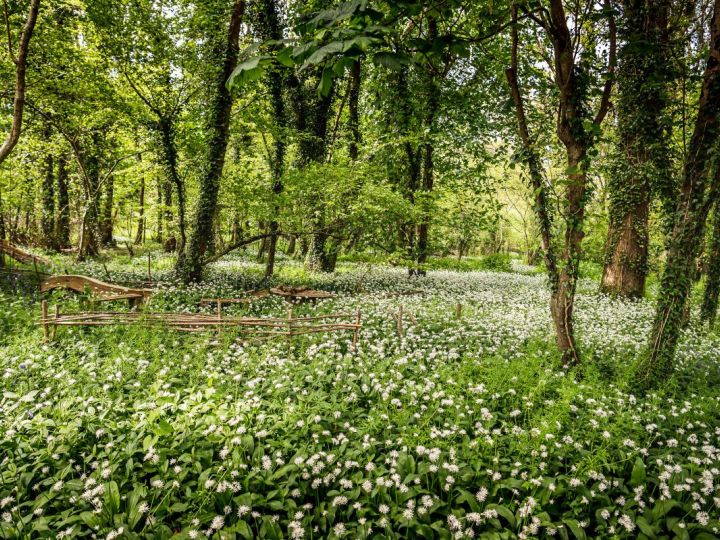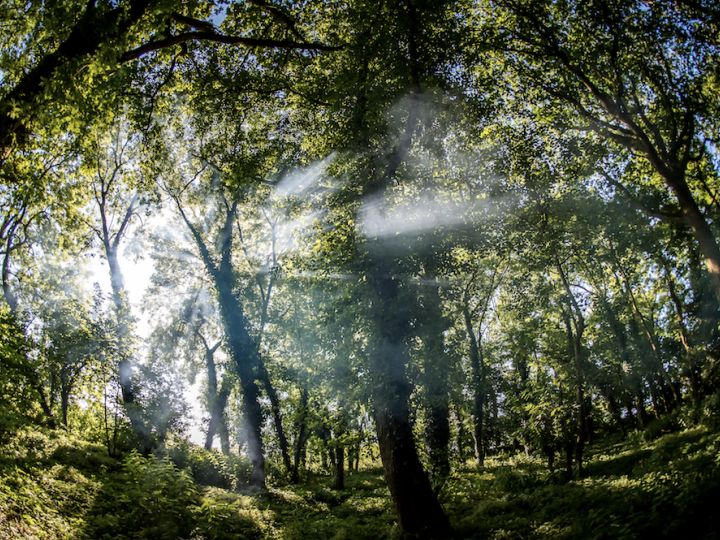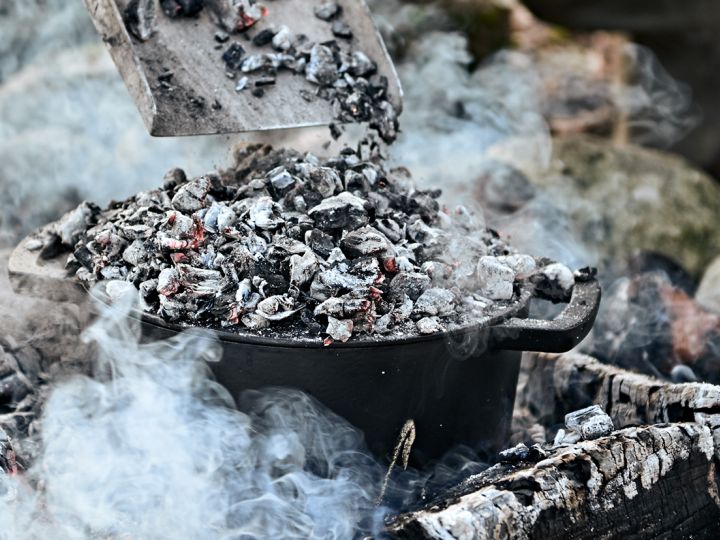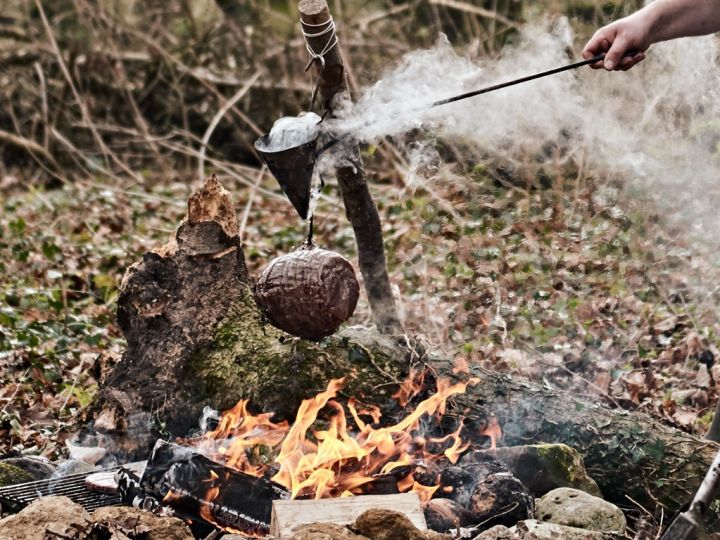The term bbq was often associated with a small disposable, masonry set up or the gas grill you’d wheel out each year after a long winters retirement. Nowadays wood fired cooking has taken bbq to a new level. Smoking, open flames, off set, direct, indirect & asado cooking are the new ways to bbq.
With a large range of new bits of kit & methods of cooking over flames, bbq has evolved into a more refined method of cooking.
There would appear to be something hypnotic about live fire. The gathering of people around it, sharing a feast of smokey meats & vegetables speaks out to us all. Far removed from the burgers and charred sausages we’ve all seen, whole joints cooked on or off the bone for several hours is really something quite special. More often than not, a simple set up of burning wood turning to coals and a grill is all you need. Plenty of air flow for the fire to burn cleanly, ensuring that blue wet smoke is nowhere to be seen. Useful bits of kit to have to hand are a grill brush, a cast iron pot or Dutch oven, herb brush, a trusty stick to move the fire with, an axe & a sturdy set of tongs. Lighting your fire an hour or so before you plan to cook and preparing your wood is key. Choosing the right sized logs to burn is very important. Too big and the fire will become smokey and low in energy as it tries to burn too big a log, becoming smothered. Too small and you’ll run out of hot embers quickly losing heat rapidly over 30 minutes or so.
Have your grill set roughly a foot above the fire, this will give you plenty of space to refuel the fire, move the coals where you want them & bake around it should you want to. Making the most of your fire is key. The different stages of burning can be used for cooking different foods. At first when it’s at its fiercest with flames, this heat can be used to cook and smoke vegetables in their skins, concentrating their flavour and leaving them to steam in residual heat. Next when the fire has burnt down to coals and glowing white hot, this is the time to cook your steaks, burgers, sausages or other meats if this size. A good idea is to move the coals to one side, having a hot area for grilling then a slightly cooler area should there be any flair up from fats dripping onto the coals. Season the meat well on both sides then place on the grill. After 3 or 4 minutes the meat will have created a crust and it’ll loosen from the grills, releasing, allowing you to turn it over. The best steaks we recommend for cooking this way would be ribeyes on or off the bone, sirloin, rump steaks or rump cap, fillet & skirt steaks. Other more unusual cuts that also work well would be Denver steaks, flat irons, chuck ribeyes & hanger steak. For pork, ribeyes, loin steaks, leg steaks & bacon chops work brilliantly. For lamb, cutlets, leg steaks, rumps, loins, noisettes, neck fillets & Barnsley chops.
Once the fire has burnt down and only hot ashes remain, the residual heat is perfect for baking vegetables in. Submerge them completely in the ashes and leave to cook overnight. The ashes form a sort of blanket, baking & steaming the vegetables with a long slow cook. Root vegetables are perfect for this, beetroots, carrots, celeriac’s, potatoes and fennel works brilliantly. Alternatively you could fill a cast iron pot or Dutch oven with the ashes to bury the vegetables , rather than leaving them in the ashes of the fire.
Cast iron pots are fantastic to cook with over fire, they conduct the heat brilliantly & take a good battering from the flames. They can also double as an oven, nestling them into the coals & then piling the lid with hot embers. This is perfect for cooking harder working bits of meat, a slow braise with some foraged herbs for aromats and a little water, wine or beer, whatever you have to hand. Lamb shoulder, pork shoulder, beef shin, lamb shanks and brisket can work this way. Ensure to check the fire, tend to it every 30 minutes or so to keep a nice even heat whilst cooking. The liquid will evaporate also, keep that topped up to stop the pan from drying out.
To take the meats to another level, a brine will elevate the flavours, bringing a salty tang whilst seasoning the meat as it cooks. Bribes can be made from water & salt with a few herbs and spices, or even with rendered fat/tallow. Whey is another interesting liquid to use in your brine, the liquid separated from the curds when making cheese or yoghurt, mixed with salt at 5% ratio and a hard herb such as rosemary, thyme or bay plus a few peppercorns. Using a herb brush, wash the meat every 20 minutes or so as it cooks. They whey is high in sugar so it will create a wonderful acidic yet sweet crust as it caramelises.
For inspiration, some of our favourite books for cooking with fire would be Gill Meller’s outdoor cooking, Niklas Elstedts food from the fire, Lennox Hasties Finding Fire & Pitt cue’s the cook book. These chefs have mastered the art of cooking its fire and have some wonderful recipes to try.
Setting aside the time to cook for friends and family is a really special way to share a meal. A simple well prepared piece of meat, some wonderful vegetables & a punchy dressing is all you need.





